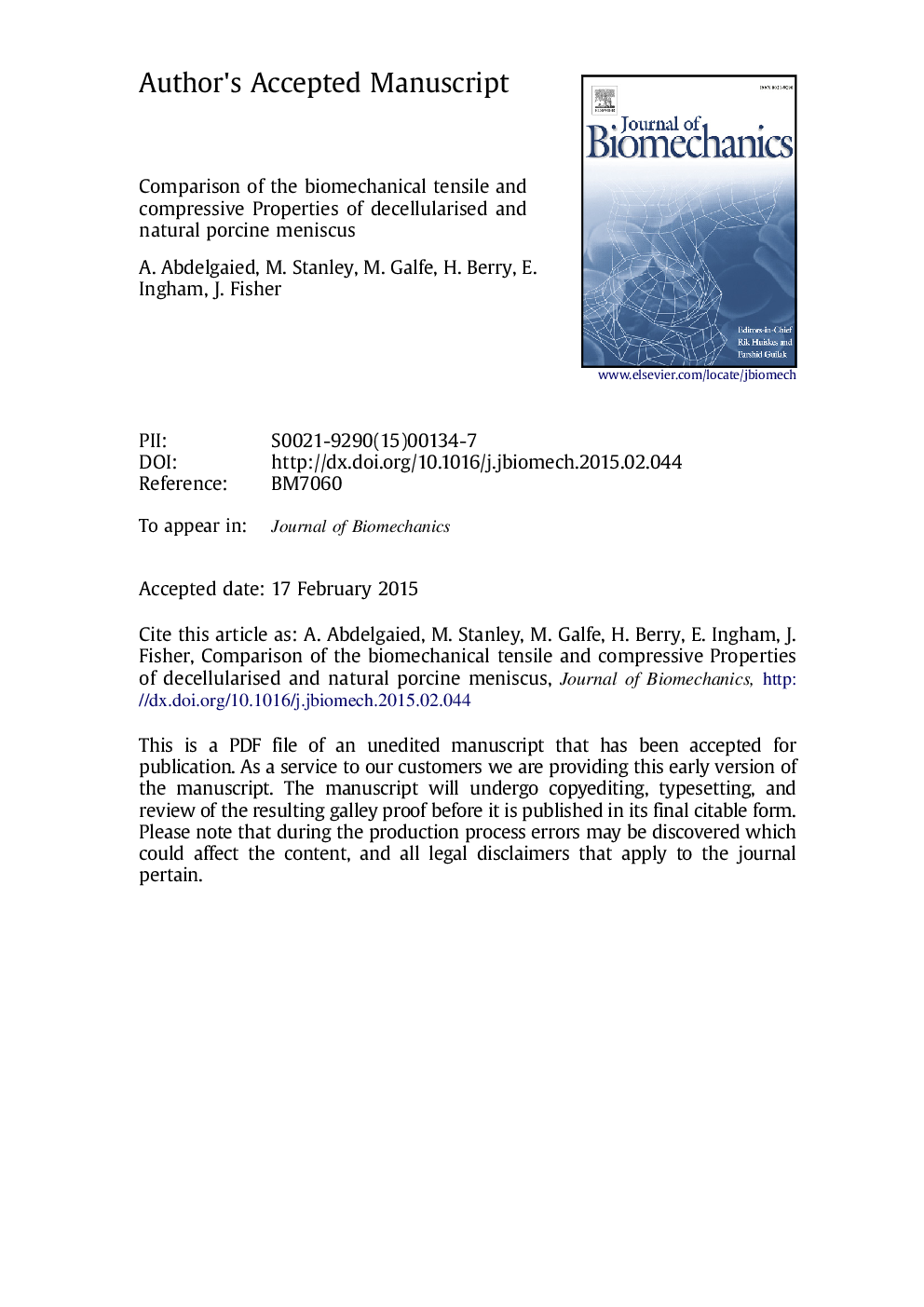| Article ID | Journal | Published Year | Pages | File Type |
|---|---|---|---|---|
| 10431488 | Journal of Biomechanics | 2015 | 32 Pages |
Abstract
Meniscal repair is widely used as a treatment for meniscus injury. However, where meniscal damage has progressed such that repair is not possible, approaches for partial meniscus replacement are now being developed which have the potential to restore the functional role of the meniscus, in stabilising the knee joint, absorbing and distributing stress during loading, and prevent early degenerative joint disease. One attractive potential solution to the current lack of meniscal replacements is the use of decellularised natural biological scaffolds, derived from xenogeneic tissues, which are produced by treating the native tissue to remove the immunogenic cells. The current study investigated the effect of decellularisation on the biomechanical tensile and compressive (indentation and unconfined) properties of the porcine medial meniscus through an experimental-computational approach. The results showed that decellularised medial porcine meniscus maintained the tensile biomechanical properties of the native meniscus, but had lower tensile initial elastic modulus. In compression, decellularised medial porcine meniscus generally showed lower elastic modulus and higher permeability compared to that of the native meniscus. These changes in the biomechanical properties, which ranged from less than 1% to 40%, may be due to the reduction of glycosaminoglycans (GAG) content during the decellularisation process. The predicted biomechanical properties for the decellularised medial porcine meniscus were within the reported range for the human meniscus, making it an appropriate biological scaffold for consideration as a partial meniscus replacement.
Keywords
Related Topics
Physical Sciences and Engineering
Engineering
Biomedical Engineering
Authors
A. Abdelgaied, M. Stanley, M. Galfe, H. Berry, E. Ingham, J. Fisher,
